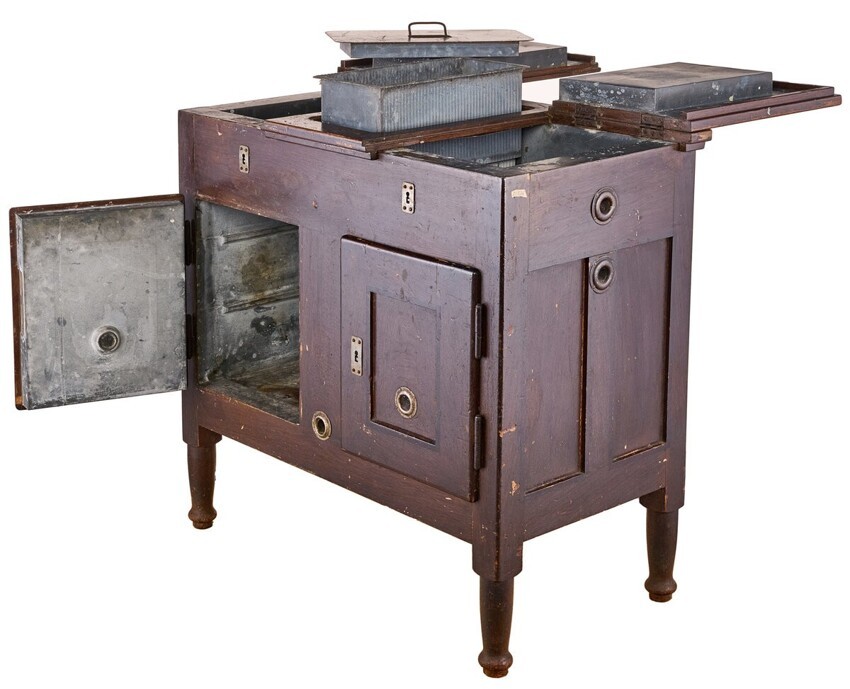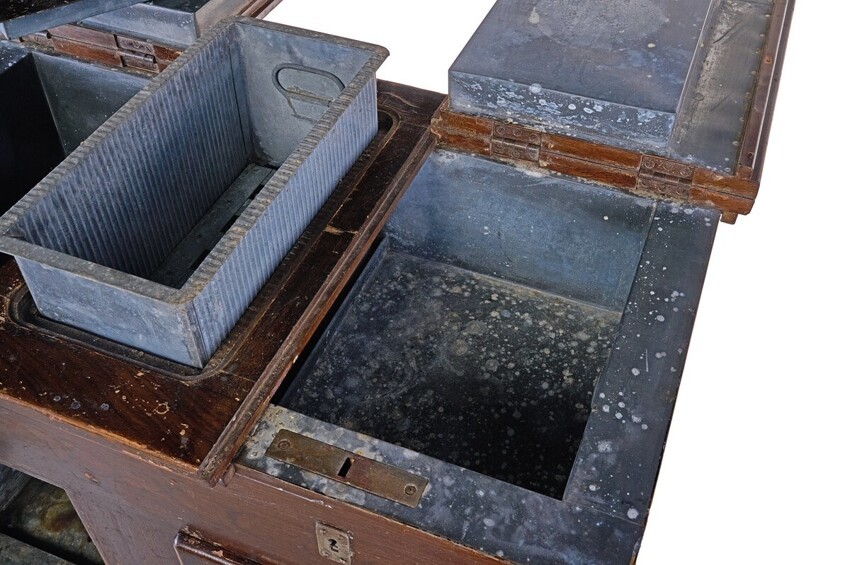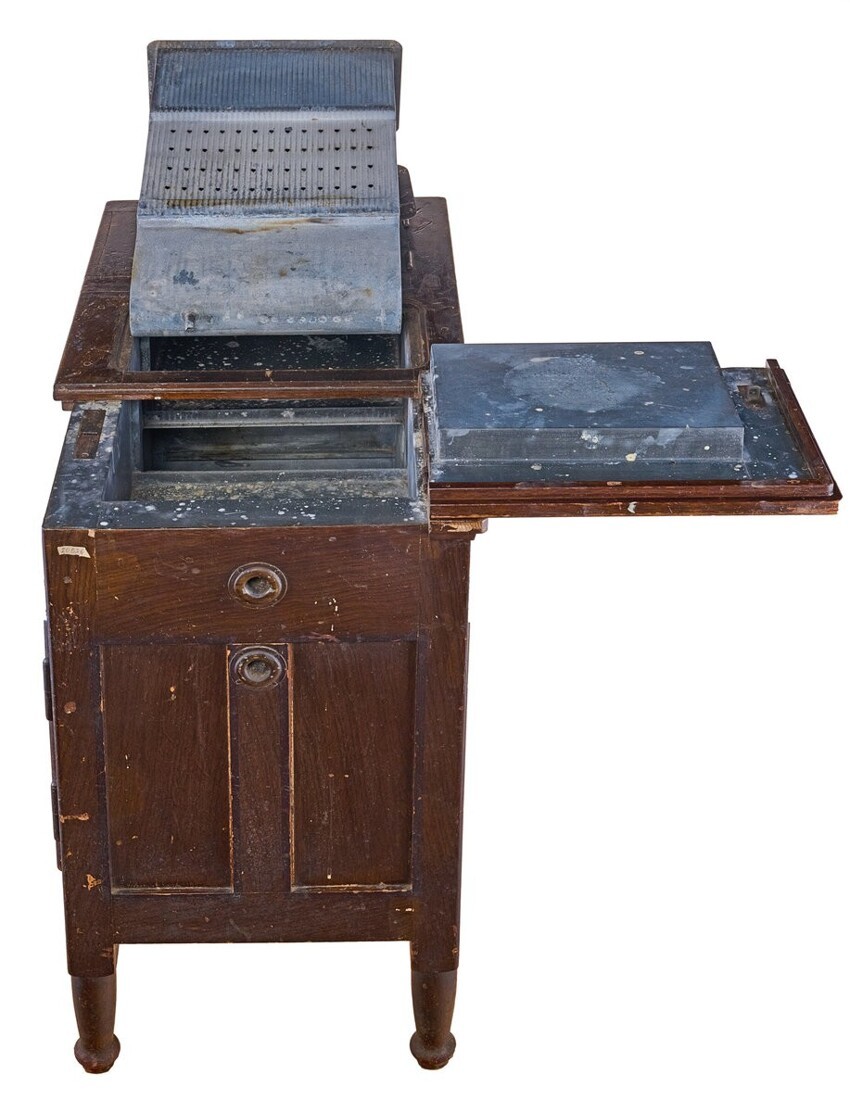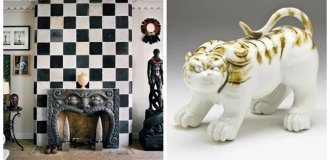Refrigerator that works without electricity all year round (9 photos)
Refrigerators are different. Some - with motors and compressors - cool air and products through compression and expansion cycles substances. These are now in almost every home. Others don't need no special devices - they just keep the cold due to ice and thick walls. 

In private houses, special rooms were allocated for glaciers - usually basements or dugouts. In winter and spring they were filled with ice, which were cut on the rivers. The ice melted, but slowly. Deep underground he could last until the end of summer. All the heat reaching the glacier was spent on melting ice, and the temperature in the room remained low. 
It was difficult to equip such a glacier in city apartments, and in the 17th-18th centuries, glacier cabinets appeared. Well crafted closet had ventilation but insulated the food inside from the heat outside. In that thick outer wooden walls served as insulation for the glacier, as well as steel and zinc panels of internal compartments. 
The temperature in such room glaciers was slightly higher than in vegetable compartments of today's household refrigerators: 7 °C vs. usual 3-4°С. This allowed the storage of perishable products, but only while maintaining a constant amount of ice or snow. in winter in Petersburg, from where this glacier came to the museum, in snow and ice there is no lack. And in the summer, ice could be bought without much difficulty: they the owners of large underground glaciers, who had been storing ice since spring, traded. 
However, they could even buy ice for a home refrigerator inhabitants of the southern countries. By the end of the 19th century, a global industry had formed ice trade: from the northern latitudes, blocks were transported in the holds of ships and delivered all over the world. Even in India and Australia it was possible make ice cream or toss a couple of ice cubes into a cocktail. Trade ice, like ice cabinets, existed long after the invention compressor refrigerator - up to the middle of the last century. 
Inside such refrigerated cabinets there were special compartments for ice or snow.





















